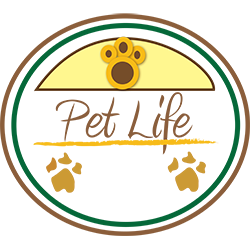
Understanding your Pet's Body Language
Pets can communicate with us in many ways, and one of the most important ways they communicate is through body language. Understanding your pet's body language is crucial for building a strong bond with your pet and for identifying signs of stress, anxiety, and illness. These are some key things to look for when interpreting your pet's body language.
Dogs:
Tail Position: A dog's tail position can indicate its mood and level of excitement. A relaxed tail indicates a calm or content mood, while a tail held high indicates excitement or alertness. A tail tucked between the legs indicates fear or anxiety.
Ear Position: A dog's ear position can also indicate its mood. Ears held forward indicate interest or attentiveness, while ears flattened against the head indicate fear or submission.
Eye Contact: Eye contact is another important indicator of a dog's mood. A relaxed, friendly dog will make eye contact with you, while a fearful or aggressive dog may avoid eye contact or stare intensely.
Body Posture: A dog's body posture can also indicate its mood. A relaxed, happy dog will have a loose, wiggly body posture, while a fearful or aggressive dog may stand stiffly or crouch low to the ground.
Vocalizations: Dogs also communicate through vocalizations. Barking, growling, and whining can all indicate different levels of excitement or stress.
Cats:
Tail Position: A cat's tail position can indicate its mood. A relaxed cat will hold their tail upright or slightly curved, while an agitated cat may hold their tail low or twitch it rapidly.
Ear Position: A cat's ear position can also indicate its mood. Ears held forward indicate interest or attentiveness, while ears flattened against the head indicate fear or aggression.
Eye Contact: Eye contact is another important indicator of a cat's mood. A relaxed, friendly cat will make eye contact with you, while an agitated or fearful cat may avoid eye contact or stare intensely.
Body Posture: A cat's body posture can also indicate its mood. A relaxed, happy cat will have a loose, relaxed body posture, while an agitated or fearful cat may arch their back, hiss, or flatten their ears against their head.
Vocalizations: Cats communicate through vocalizations as well. Meowing, purring, and hissing can all indicate different levels of excitement or stress.
Birds:
Feather Position: A bird's feather position can indicate its mood. A relaxed bird will have smooth, relaxed feathers, while a fearful or agitated bird may have ruffled or fluffed feathers.
Wing Position: A bird's wing position can also indicate its mood. A relaxed bird will hold their wings slightly away from their body, while a fearful or agitated bird may hold their wings tightly against their body.
Eye Contact: Eye contact is essential for communicating with birds. A relaxed, friendly bird will make eye contact with you, while a fearful or aggressive bird may avoid eye contact or stare intensely.
Body Posture: A bird's body posture can also indicate its mood. A relaxed, happy bird will have a relaxed body posture, while a fearful or agitated bird may crouch low to the ground or fluff their feathers.
Vocalizations: Birds communicate through vocalizations as well. Singing, chirping, and squawking can all indicate different levels of excitement or stress.
Dogs:
Tail Position: A dog's tail position can indicate its mood and level of excitement. A relaxed tail indicates a calm or content mood, while a tail held high indicates excitement or alertness. A tail tucked between the legs indicates fear or anxiety.
Ear Position: A dog's ear position can also indicate its mood. Ears held forward indicate interest or attentiveness, while ears flattened against the head indicate fear or submission.
Eye Contact: Eye contact is another important indicator of a dog's mood. A relaxed, friendly dog will make eye contact with you, while a fearful or aggressive dog may avoid eye contact or stare intensely.
Body Posture: A dog's body posture can also indicate its mood. A relaxed, happy dog will have a loose, wiggly body posture, while a fearful or aggressive dog may stand stiffly or crouch low to the ground.
Vocalizations: Dogs also communicate through vocalizations. Barking, growling, and whining can all indicate different levels of excitement or stress.
Cats:
Tail Position: A cat's tail position can indicate its mood. A relaxed cat will hold their tail upright or slightly curved, while an agitated cat may hold their tail low or twitch it rapidly.
Ear Position: A cat's ear position can also indicate its mood. Ears held forward indicate interest or attentiveness, while ears flattened against the head indicate fear or aggression.
Eye Contact: Eye contact is another important indicator of a cat's mood. A relaxed, friendly cat will make eye contact with you, while an agitated or fearful cat may avoid eye contact or stare intensely.
Body Posture: A cat's body posture can also indicate its mood. A relaxed, happy cat will have a loose, relaxed body posture, while an agitated or fearful cat may arch their back, hiss, or flatten their ears against their head.
Vocalizations: Cats communicate through vocalizations as well. Meowing, purring, and hissing can all indicate different levels of excitement or stress.
Birds:
Feather Position: A bird's feather position can indicate its mood. A relaxed bird will have smooth, relaxed feathers, while a fearful or agitated bird may have ruffled or fluffed feathers.
Wing Position: A bird's wing position can also indicate its mood. A relaxed bird will hold their wings slightly away from their body, while a fearful or agitated bird may hold their wings tightly against their body.
Eye Contact: Eye contact is essential for communicating with birds. A relaxed, friendly bird will make eye contact with you, while a fearful or aggressive bird may avoid eye contact or stare intensely.
Body Posture: A bird's body posture can also indicate its mood. A relaxed, happy bird will have a relaxed body posture, while a fearful or agitated bird may crouch low to the ground or fluff their feathers.
Vocalizations: Birds communicate through vocalizations as well. Singing, chirping, and squawking can all indicate different levels of excitement or stress.
- Choosing a selection results in a full page refresh.












